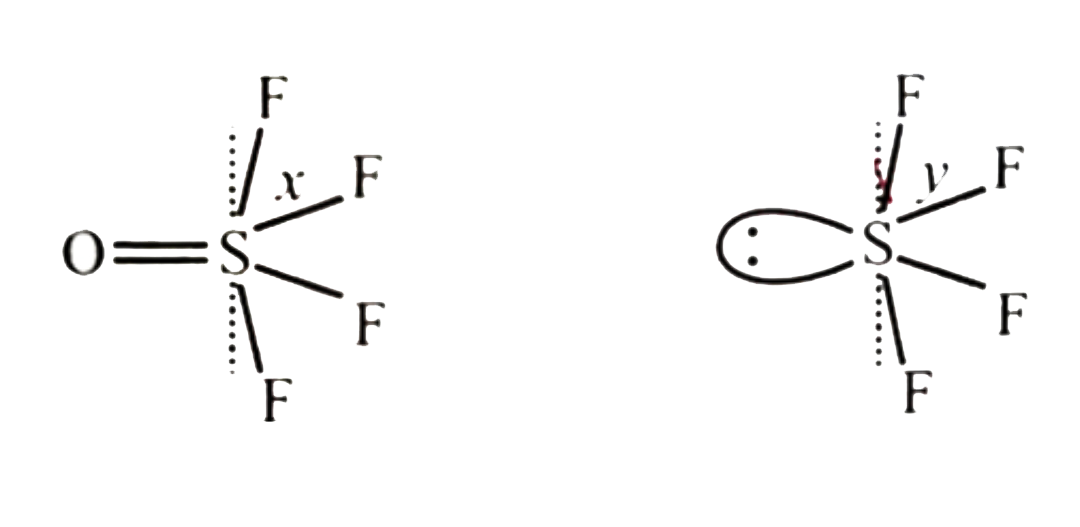An alekene X is obtained by dehydration of ann alcohol Y. X on ozonolysis gives two molecules of ethanal for every molecule of alkene. X and Y are
X=3-hexene,Y=3-hexanol
X=2-butene, Y=2-butanol
X=1-butene, Y=1-butanol
X=1-hexane, Y=1-hexanol
The correct Answer is:B
To solve the problem, we need to identify the alkene (X) and the alcohol (Y) based on the given information. Let's break it down step by step.
Step 1: Identify the Alkene (X)
The problem states that alkene X is obtained by the dehydration of an alcohol Y. Additionally, X undergoes ozonolysis to yield two molecules of ethanal (acetaldehyde) for every molecule of alkene.
Step 2: Understand Ozonolysis
Ozonolysis is a reaction in which alkenes react with ozone (O3) to form carbonyl compounds (aldehydes or ketones). The ozonolysis of an alkene results in the cleavage of the double bond and the formation of two carbonyl compounds.
Step 3: Analyze the Product of Ozonolysis
Since ozonolysis of alkene X gives two molecules of ethanal (C2H4O), we can deduce that the structure of X must allow for the formation of two carbonyl groups, each containing two carbons. This indicates that X must be a symmetrical alkene that can be cleaved to yield two identical aldehyde molecules.
Step 4: Determine the Structure of Alkene X
The simplest symmetrical alkene that can produce two molecules of ethanal upon ozonolysis is 2-butene (C4H8). The ozonolysis of 2-butene would yield two molecules of ethanal:
CH3CH=CHCH3O3−→2CH3CHO
Step 5: Identify the Alcohol (Y)
Now, we need to find the alcohol Y that can dehydrate to form 2-butene. The alcohol that can be dehydrated to form 2-butene is 2-butanol (C4H10O). The dehydration of 2-butanol in the presence of a dehydrating agent (like dilute H2SO4) leads to the formation of 2-butene.
Conclusion
Thus, the alkene X is 2-butene, and the alcohol Y is 2-butanol.
Final Answer:
- Alkene (X): 2-butene (C4H8)
- Alcohol (Y): 2-butanol (C4H10O)
---
The problem states that alkene X is obtained by the dehydration of an alcohol Y. Additionally, X undergoes ozonolysis to yield two molecules of ethanal (acetaldehyde) for every molecule of alkene.
Ozonolysis is a reaction in which alkenes react with ozone (O3) to form carbonyl compounds (aldehydes or ketones). The ozonolysis of an alkene results in the cleavage of the double bond and the formation of two carbonyl compounds.
Since ozonolysis of alkene X gives two molecules of ethanal (C2H4O), we can deduce that the structure of X must allow for the formation of two carbonyl groups, each containing two carbons. This indicates that X must be a symmetrical alkene that can be cleaved to yield two identical aldehyde molecules.
The simplest symmetrical alkene that can produce two molecules of ethanal upon ozonolysis is 2-butene (C4H8). The ozonolysis of 2-butene would yield two molecules of ethanal:
Now, we need to find the alcohol Y that can dehydrate to form 2-butene. The alcohol that can be dehydrated to form 2-butene is 2-butanol (C4H10O). The dehydration of 2-butanol in the presence of a dehydrating agent (like dilute H2SO4) leads to the formation of 2-butene.
Thus, the alkene X is 2-butene, and the alcohol Y is 2-butanol.
- Alkene (X): 2-butene (C4H8)
- Alcohol (Y): 2-butanol (C4H10O)
Topper's Solved these Questions
- BOOK - NCERT FINGERTPS ENGLISHCHAPTER - HYDROCARBONS EXERCISE - Higher Order Thinkin Skills7videos
HYDROCARBONS
- BOOK - NCERT FINGERTPS ENGLISHCHAPTER - HYDROCARBONS EXERCISE - Assertion & Reason15videos
HYDROCARBONS
- BOOK - NCERT FINGERTPS ENGLISHCHAPTER - EQUILIBRIUM EXERCISE - Assertion And Reason15videos
EQUILIBRIUM
- BOOK - NCERT FINGERTPS ENGLISHCHAPTER - HYDROGEN EXERCISE - Assertion And Reason15videos
HYDROGEN
Similar Questions
Knowledge Check
- Question 1 - Select One
An alekene X is obtained by dehydration of ann alcohol Y. X on ozonolysis gives two molecules of ethanal for every molecule of alkene. X and Y are
ACH3CH2CH2OHBCH3CH2OHCCH3CH=CHCH2OHDCH3CH2C∣OHHCH3 - Question 2 - Select One or More
A compound 'X' (C14H14O) on mild oxidation yields C14H12O (Y). If X is treated with a dehydrating agent, it loses a molecule of H2O and resulting product on vigorous oxidation yield two molecule of benzoic acid. Identify the structure of X and Y.
A BX is Ph−OH∣CH−CH2−PhCY is Ph−O∣∣C−CH2−PhDY is
BX is Ph−OH∣CH−CH2−PhCY is Ph−O∣∣C−CH2−PhDY is
An organic compound 'X' on heating with conc. H2SO4 forms a compound 'Y' which on addition of one molecule ofhydrogen in the presence of nickel forms a compound 'Z'. One molecule of compound 'Z' on combustion forms two molecules of CO2 and three molecules of H2O. Identify, giving reasons the compounds X,Y and Z. write the chemical equations for the reactions involved.
View SolutionBenzene can be obtained by heating either benzoic acid with X or phenol with Y. X and Y, respectively are
View SolutionAn unsaturated hydrocarbon 'A' adds two molecules of H2 and on reductive ozonolysis gives butane-1, 4-dial, ethanal and propanone. Give the structure of 'A' , write its IUPAC name and explain the reactions involved.
View SolutionCompare bond lengths (x and y) for the following molecules
 View Solution
View Solutionsimilar to alkenes and alkynes benzene also undergoes ozonolysis. In the sequence of the given reaction identify X and Y.
 View Solution
View SolutionAt STP the density of a gas X is three times that of gas Y while molecule mass of gas Y is twice that of X. The ratio of pressures of X and Y will be:
View Solution

